Tiny pathtracer
A tiny software path tracer rendering Cornell Box
Set up
Operating & compiling environment:
- Ubuntu (WSL2 in Windows11)
Software rendering:
- CPU: AMD 5800H
Model:
- Cornell Box
Command:
- cmake ..
- make
Code
Build the Bounding volume hierarchy (BVH)
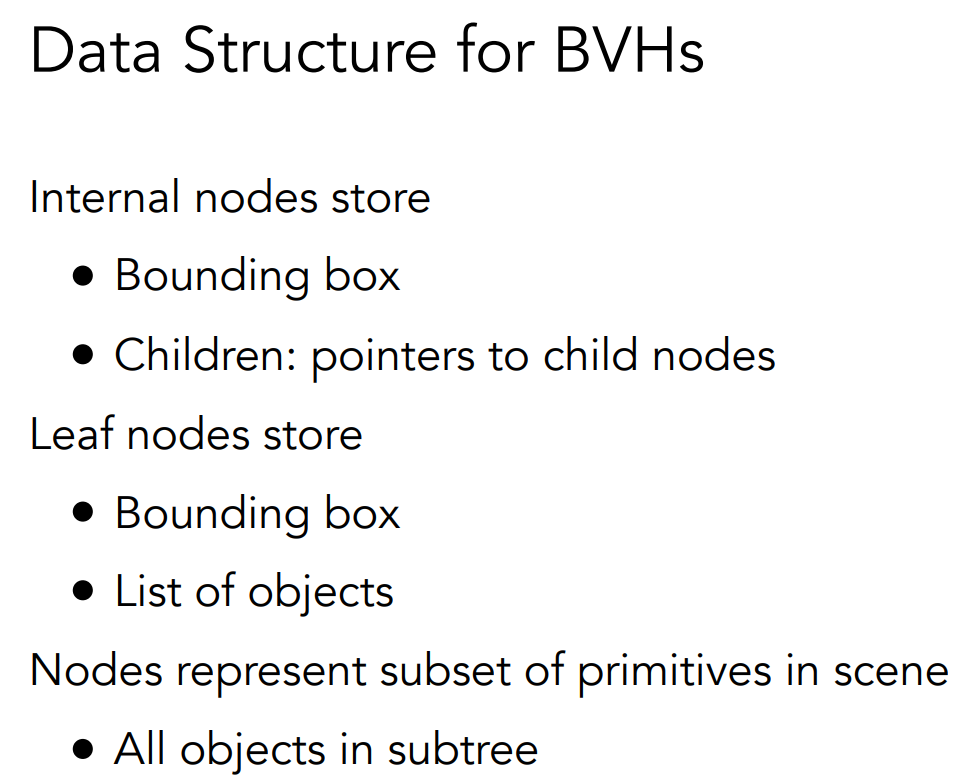
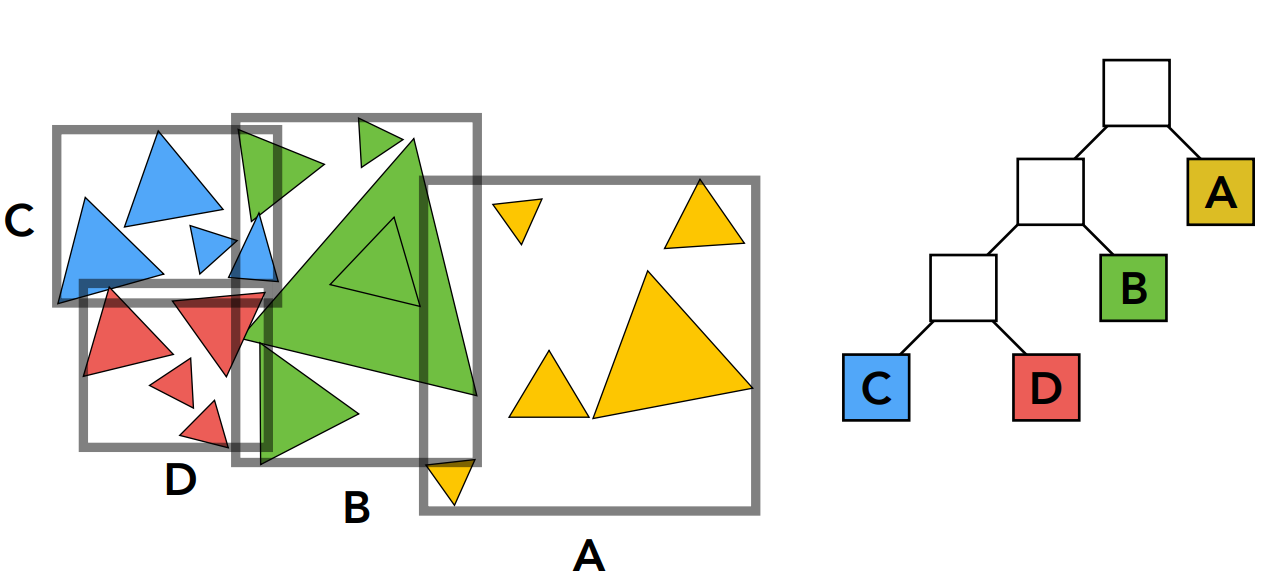
Pseudocode:
function BVHAccel(objects)
Create a new node
Calculate the bounding box of all objects
Assign it to the node
If there is only one object
Create a leaf node
Assign object to this node
Return this node
Else
Calculate the centroid of the bounding box
Determine the dimension (x, y, or z) with the maximum spread of centroids
Sort objects based on their centroid position along this dimension
Divide the objects into two groups
Recursively call BVHAccel on both groups to create left and right children
Calculate the bounding box of node as union of bounding boxes of children
Return this node
End If
End function
Use the Surface Area Heuristic (SAH) to solve the problem that objects are not uniformly distributed.
\[C = C_{trav} + \frac {S_{A}}{S_{N}} N_{A} C_{isect}+ \frac {S_{B}}{S_{N}} N_{B} C_{isect}\]For each axis (x, y, z)
Sort objects based on their centroid position along this axis
For each possible split position along sorted objects
Calculate the bounding boxes and counts for objects on the left and right of split
Calculate cost of this configuration using SAH
End For
End For
Patch tracing
Beginning
Rendering equation:

Monte Carlo integration:
\[\int_{a}^{b}f(x)dx=\frac{1}{N}\sum_{i=1}^{N}\frac{f(X_{i})}{p(X_{i})}\]Global illumination = Direct illumination + indirect illumination
\[L = E + KE + K^{2}E + K^{3}E + ...\]Russian roulette
Previously, we always shoot a ray at a shading point and get the shading result \(\mathbf{L_{o}}\). Suppose we manually set a probability P (0 < P < 1) With probability P, shoot a ray and return the shading result divided by P: \(\mathbf{L_{o}}\) / P With probability 1-P, don’t shoot a ray and you’ll get 0. In this way, you can still expect to get \(\mathbf{L_{o}}\):
\[E = P * (\mathbf{L_{o}} / P) + (1 - P) * 0 = \mathbf{L_{o}}\]Sample light source
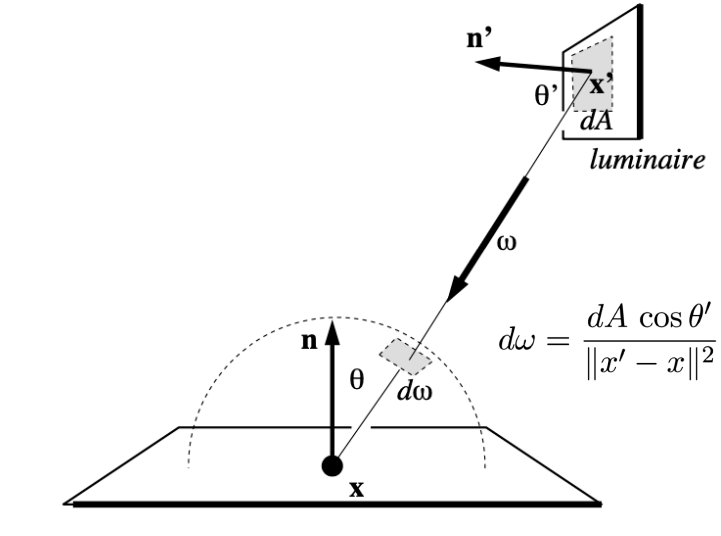
The rendering equation becomes:
\[\begin{align} L_{o}(x,\omega_{o}) & = \int_{\Omega^{+}} L_{i}(x,\omega_{i})f_{r}(x,\omega_{i},\omega_{o})\cos\theta d\omega_{i}\\ & = \int_{A} L_{i}(x,\omega_{i})f_{r}(x,\omega_{i},\omega_{o})\frac{\cos\theta \cos\theta^{\prime}}{\left \|x^{\prime} - x \right \|^{2} } dA \end{align}\]Pseudocode of Algorithm:
shade (p, wo)
sampleLight ( inter , pdf_light )
Get x, ws , NN , emit from inter
Shoot a ray from p to x
If the ray is not blocked in the middle
L_dir = emit * eval(wo , ws , N) * dot(ws , N) * dot(ws , NN) / |x-p|^2 / pdf_light
L_indir = 0.0
Test Russian Roulette with probability RussianRoulette
wi = sample (wo , N)
Trace a ray r(p, wi)
If ray r hit a non - emitting object at q
L_indir = shade (q, -wi) * eval (wo , wi , N) * dot(wi , N) / pdf(wo , wi , N) / RussianRoulette
Return L_dir + L_indir
Enhancement
Multi-threaded acceleration
Maximize the amount of computation per thread, and use multiple threads for the entire frame computation.
In this project,the rendering process can be accelerated by using multiple threads to chunk the image and perform path tracing for each part synchronously. Here, the rendering (process) implemented by Render() (program) can be executed concurrently using fragments (thread) for multiple pixel operations (multiple threads).
#include <mutex>
#include <thread>
...
int thread_num = 20; // AMD5800H, based on your own cpu
int thread_height = scene.height / thread_num;
// thread is a right-valued reference
std::vector<std::thread> threads(thread_num);
...
std::mutex mtx; // Solve two multi-threaded resource contention problems
float process = 0;
float Reciprocal_Scene_height=1.f/ (float)scene.height;
// Refer to lambda function
auto castRay = [&](int thread_index)
{
int height = thread_height * (thread_index + 1);
for (uint32_t j = height - thread_height; j < height; j++)
{
for (uint32_t i = 0; i < scene.width; ++i) {
// generate primary ray direction
float x = (2 * (i + 0.5) / (float)scene.width - 1) *
imageAspectRatio * scale;
float y = (1 - 2 * (j + 0.5) / (float)scene.height) * scale;
Vector3f dir = normalize(Vector3f(-x, y, 1));
for (int k = 0; k < spp; k++) {
framebuffer[j*scene.width+i] += scene.castRay(Ray(eye_pos, dir), 0) / spp;
}
}
mtx.lock();
process = process + Reciprocal_Scene_height;
UpdateProgress(process); // Every thread is used to update the process
mtx.unlock();
}
};
// from the 0th thread
for (int k = 0; k < thread_num; k++)
{
threads[k] = std::thread(castRay,k);
}
// Execute join once for each thread
for (int k = 0; k < thread_num; k++)
{
threads[k].join();
}
UpdateProgress(1.f);
Microfacet material
Microfacet BRDF:

We use the GGX for \(G(\mathbf{i,o,h})\) and \(D(\mathbf{h})\)
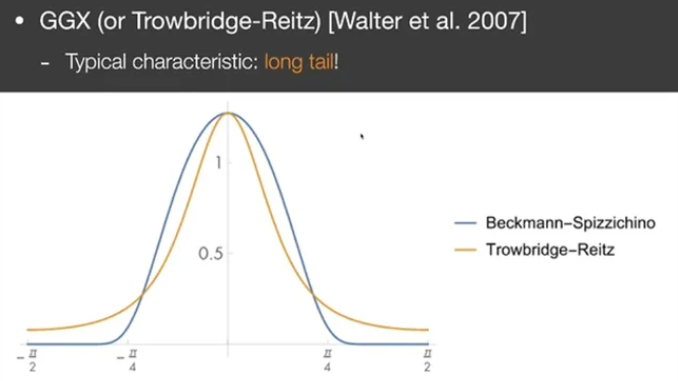
// Define the microfacet material in main.cpp
Material* microfacet = new Material(MICROFACET, Vector3f(0.0f));
microfacet->Ks = Vector3f(0.45, 0.45, 0.45);
microfacet->Kd = Vector3f(0.3, 0.3, 0.25);
microfacet->ior = 12.85;
// In sample and pdf function, it is the same as DIFFUSE
// In eval function
case MICROFACET:
{
// Implement the Torrance-Sparrow Model
float cosalpha = dotProduct(N, wo);
if (cosalpha > 0.0f)
{
// calculate the contribution of Microfacet model
float F, G, D;
fresnel(wi, N, ior, F);
float Roughness = 1;// roughness
auto G_function = [&](const float& Roughness, const Vector3f& wi, const Vector3f& wo, const Vector3f& N)
{
float A_wi, A_wo;
A_wi = (-1 + sqrt(1 + Roughness * Roughness * pow(tan(acos(dotProduct(wi, N))), 2))) / 2;
A_wo = (-1 + sqrt(1 + Roughness * Roughness * pow(tan(acos(dotProduct(wo, N))), 2))) / 2;
float divisor = (1 + A_wi + A_wo);
if (divisor < 0.001)
return 1.f;
else
return 1.0f / divisor;
};
G = G_function(Roughness, -wi, wo, N);
auto D_function = [&](const float& Roughness, const Vector3f& h, const Vector3f& N)
{
float cos_sita = dotProduct(h, N);
float divisor = (M_PI * pow(1.0 + cos_sita * cos_sita * (Roughness * Roughness - 1), 2));
if (divisor < 0.001)
return 1.f;
else
return (Roughness * Roughness) / divisor;
};
Vector3f h = normalize(-wi + wo);
D = D_function(Roughness, h, N);
// energy balance
Vector3f diffuse = (Vector3f(1.0f) - F) * Kd / M_PI;
Vector3f specular;
float divisor= ((4 * (dotProduct(N, -wi)) * (dotProduct(N, wo))));
if (divisor < 0.001)
specular= Vector3f(1);
else
specular = F *G * D / divisor;
//std::cout << "F:"<<F << "\n";
//std::cout << "diffuse:"<<diffuse<<"\n";
//std::cout << "specular:" << specular << "\n";
return diffuse+specular;
}
else
return Vector3f(0.0f);
break;
}
Remove the black noise:
In Intersection getIntersection(Ray ray):
if (t0 > 0.5) // Remove black noise
{
result.happened = true;
result.coords = Vector3f(ray.origin + ray.direction * t0);
result.normal = normalize(Vector3f(result.coords - center));
result.m = this->m;
result.obj = this;
result.distance = t0;
}
Remove the white noise:
In Vector3f Scene::castRay(const Ray &ray, int depth) const:
(hitColor).x= (clamp(0, 1, (hitColor).x));
(hitColor).y = (clamp(0, 1, (hitColor).y));
(hitColor).z = (clamp(0, 1, (hitColor).z));
Perfect mirror reflection model
In this model, only the coefficient of Fresnel reflection needs to be considered.
The BRDF of Perfect mirror reflection model:
\[f_{r}(p,\omega_{o},\omega_{i})=F_{r}(\omega_{r})\frac{\delta (\omega_{i} - \omega_{r})}{\cos \theta_{i}}\]Implementation:
Material* mirror = new Material(MIRROR, Vector3f(0.0f));
mirror->Ks = Vector3f(0.45, 0.45, 0.45);
mirror->Kd = Vector3f(0.3, 0.3, 0.25);
mirror->ior = 12.85;
// in sample
case MIRROR:
{
Vector3f localRay = reflect(wi, N);
return localRay;
break;
}
// in pdf
case MIRROR:
{
if (dotProduct(wo, N) > 0.0f)
return 1.0f;
else
return 0.0f;
break;
}
// in eval
case MIRROR:
{
float cosalpha = dotProduct(N, wo);
if (cosalpha > 0.0f)
{
float divisor = cosalpha;
if (divisor < 0.001) return 0;
Vector3f mirror = 1 / divisor;
float F;
fresnel(wi, N, ior, F);
return F * mirror;
}
else
return Vector3f(0.0f);
break;
}
// also need to do importance sampling by modifying the castRay to prevent overexposure (only sample the indir light)
case MIRROR:
{
float ksi = get_random_float(); // random number
if (ksi < RussianRoulette){
Vector3f wi = inter.m->sample(wo, N).normalized();
Ray r(p, wi);
Intersection obj_to_scene = Scene::intersect(r);
// hit obj instead of light source
if (obj_to_scene.happened) {
Vector3f f_r = inter.m->eval(wo, wi, N);
float cos_theta = dotProduct(wi, N);
float pdf_hemi = inter.m->pdf(wo, wi, N);
indir = castRay(r, depth + 1) * f_r * cos_theta / pdf_hemi / RussianRoulette;
}
}
break;
}
Result
| Different SPP (sample per pixel): | ||||
|---|---|---|---|---|
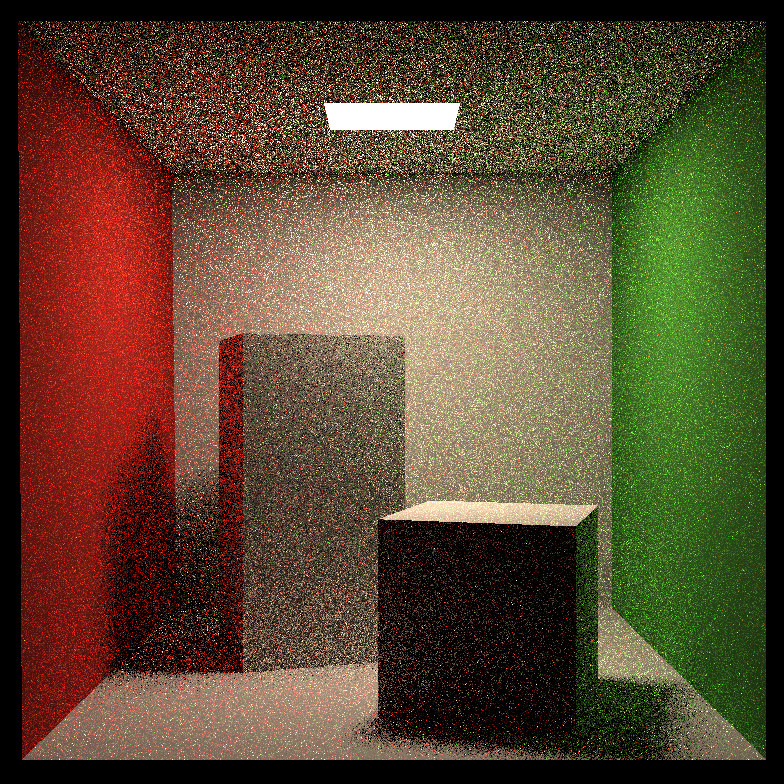
|
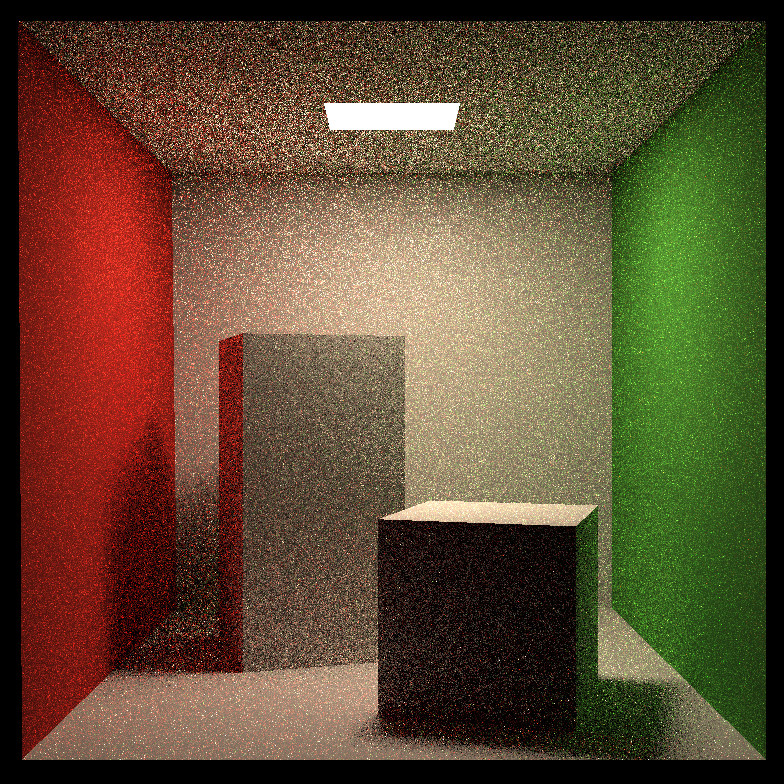
|
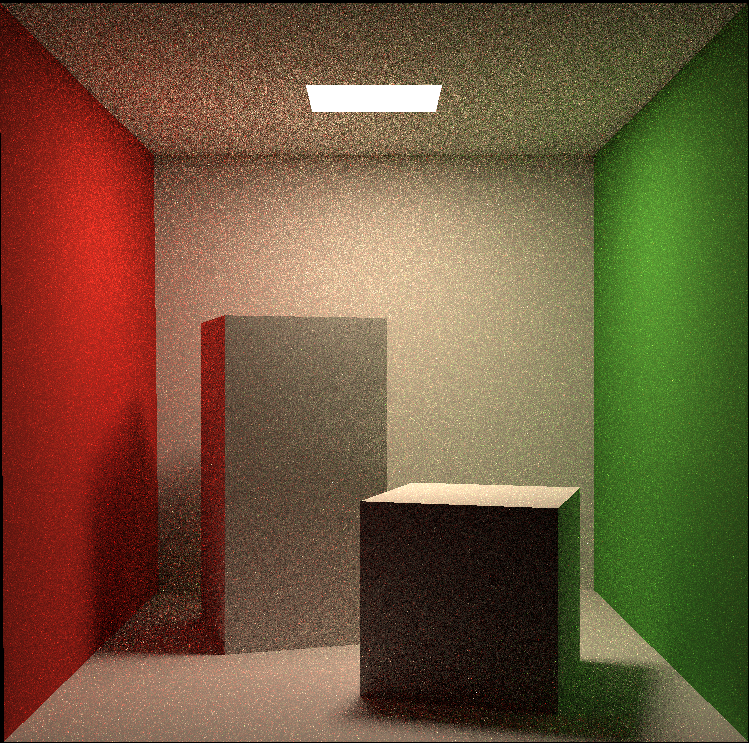
|

|

|
| Accelerated | Non-accelerated | ||
|---|---|---|---|

|

|
||

|

|
||

|

|
||

|

|
||

|

|
||
| Using microfacet (SPP=64): | |||
|---|---|---|---|
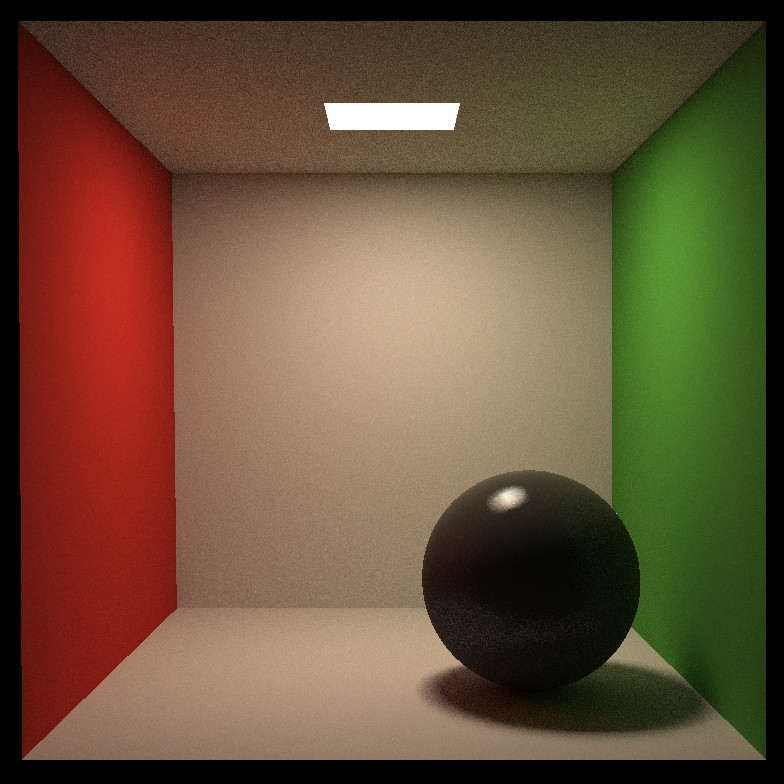
|
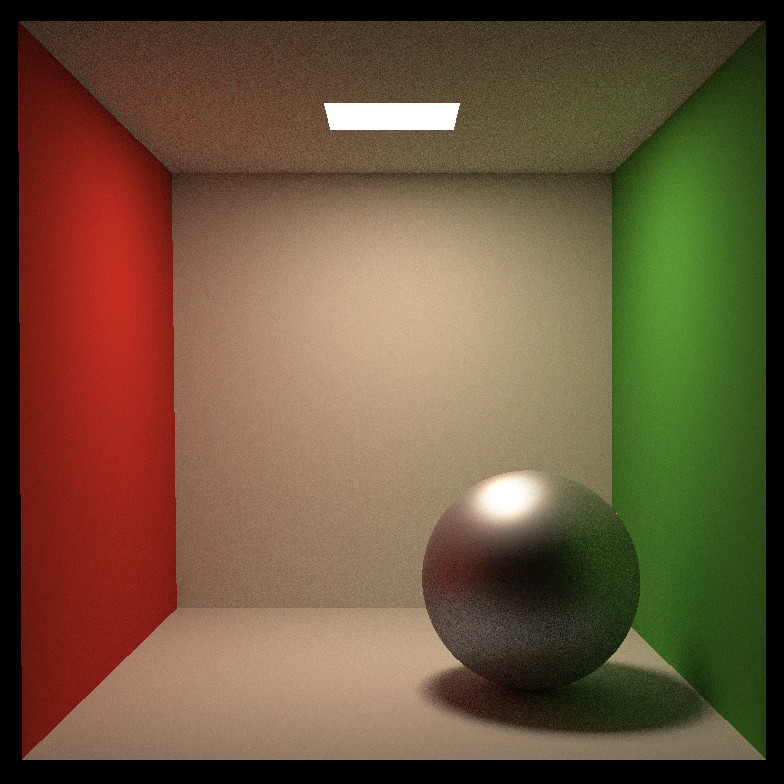
|
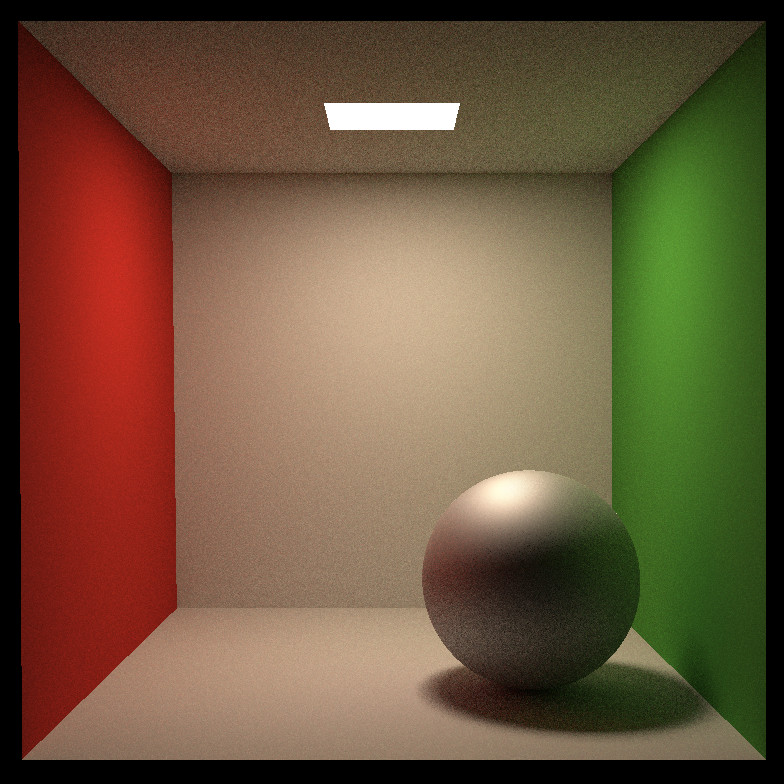
|
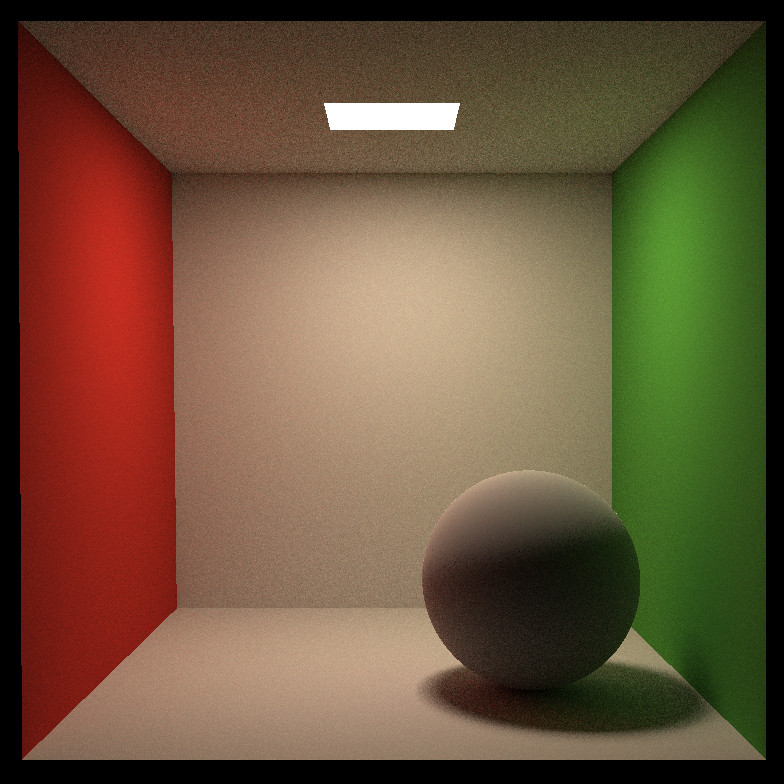
|
| Perfect mirror reflection model: |
|---|
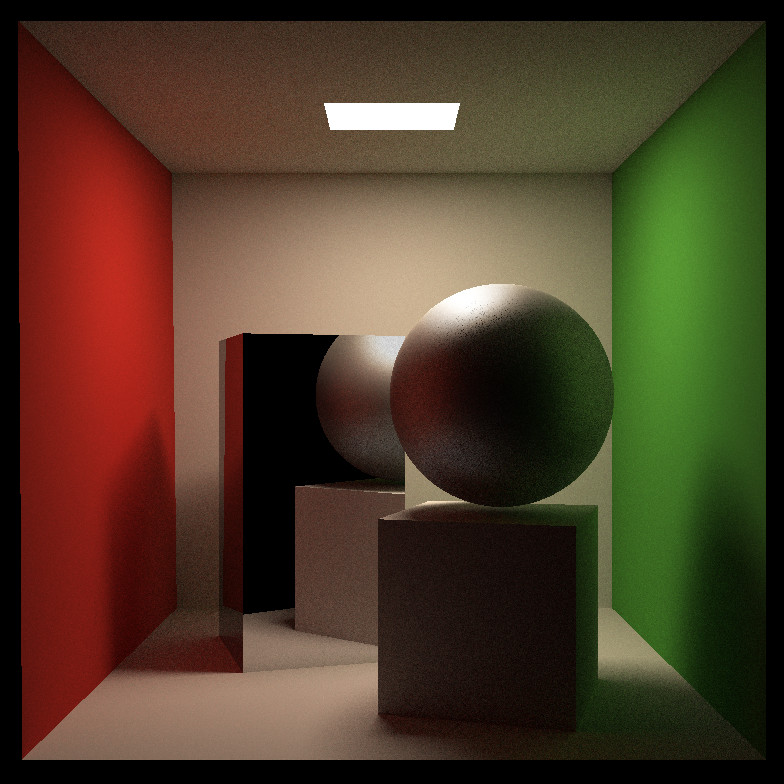
|